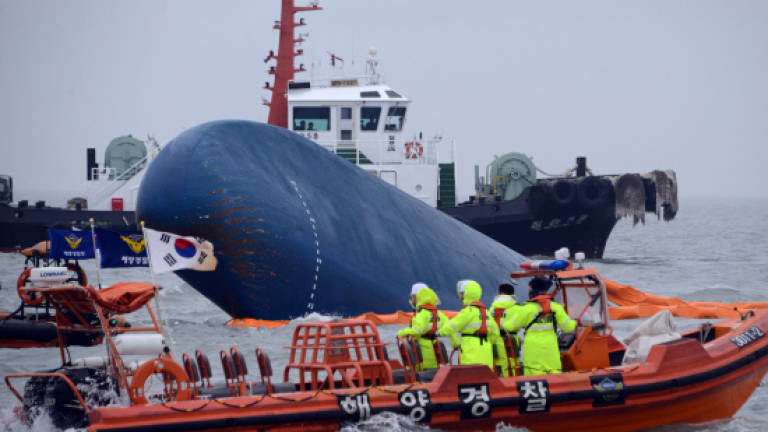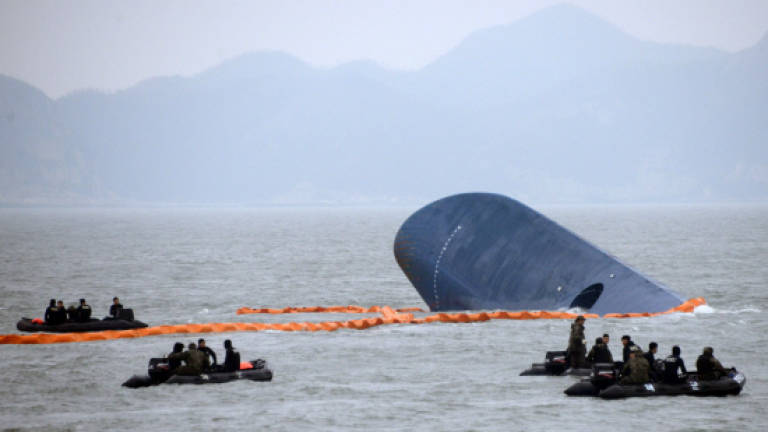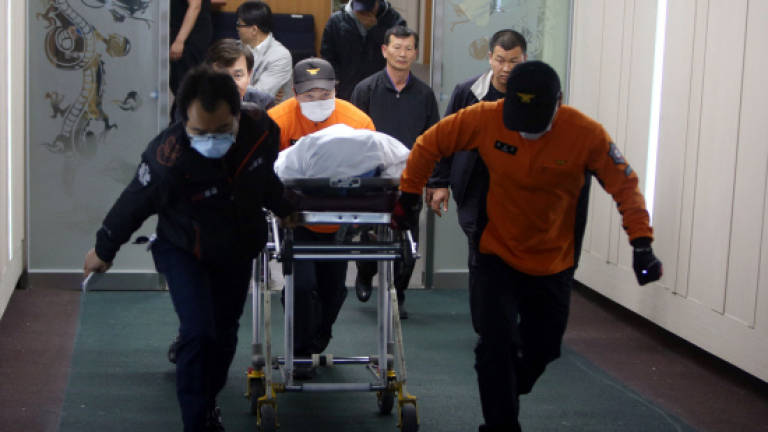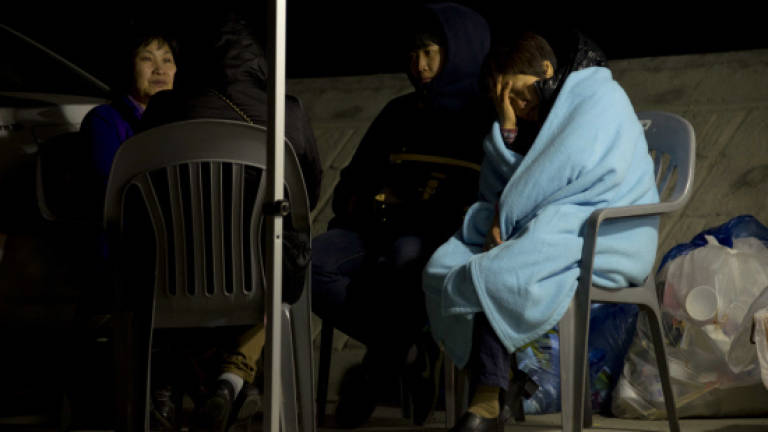'Shouldn't we move?' Ferry evacuation under scrutiny




SEOUL: National shock at a ferry disaster that may have killed hundreds of South Korean schoolchildren was mixed with fury Thursday over growing evidence that many passengers were denied a proper chance to escape.
Multiple survivor testimony highlighted the fact that passengers were repeatedly told to stay in their seats or cabins when the ferry first ran into trouble on Wednesday morning.
Those who obeyed found their possible escape route severely compromised after the vessel suddenly listed sharply to the port side, triggering total panic.
One survivor named Kim Sung-Mook said he had struggled to rescue around 30 high school students unable to escape from a large open hall on the fourth level of the ship.
"I couldn't even get into the hall because the whole thing was leaning over so badly," Kim said.
"The ship was going underwater and there was nothing for them to hold on to with their hands. They couldn't crawl up the floor because it was wet and at such a sharp angle," he said.
Using a fire hose he managed to pull a few to safety, "but there were so many of them... I couldn't help them all."
One student who was rescued said most passengers had remained in their seat for "30 to 40 minutes" after the ferry first foundered, in line with instructions from crew members and over the internal tannoy system.
"The message was repeated again and again: 'Stay put. Don't move'," said another survivor, Huh Young-Ki.
"We were asking ourselves: 'Shouldn't we move? Shouldn't we try and get out?' But the announcement was saying help would be there in 10 minutes," Huh told the News Y television channel.
Most stayed put as they were told
Discipline is strict in the South Korean education system and authority rarely flouted, leaving observers to conclude that most of the 375 high school students on the ferry, in their late teens, would probably have obeyed any official commands without question.
"If only we had been told to get out earlier, then more of us would have been able to jump into the sea," one student who managed to escape told the MBC TV channel.
"But most people just stayed put as they were told," she added.
Once the 6,825-tonne vessel Sewol had begun to list, it soon ended up at a 90 degree angle to the water, before inverting completely and sinking with only a small section of the keel showing above water.
With only 179 rescued so far, the fear is that most of the 287 still unaccounted for were trapped inside the ship as it submerged.
The suggestion that many more should have been able to escape has added to the anguish of relatives and fuelled anger in a country unused to a disaster of this scale, especially one involving its efficient and modern transport infrastructure.
Most South Koreans believe they have left behind the sort of accidents that regularly blight developing countries.
With the exception of a subway station fire in 2003 that claimed 192 lives, there have been no large-scale disasters for nearly two decades.
A Seoul department store collapsed in 1995, killing more than 500 people, while nearly 300 people died when a ferry capsized off the west coast in 1993.
One man was screaming for help
The captain of the Sewol, Lee Joon-Seok, was among those who escaped the ferry before it sank and was being questioned by investigators on Thursday.
Bae Min-Hoon, the head of Korea Maritime Security Association, said it appeared the evacuation had been badly handled.
"It seems that precious first hour or so was wasted by the instruction for passengers to stay in their cabins," Bae said.
One 61-year-old woman escaped after ignoring the advice to remain in her cabin, which she said was still being relayed as it filled with water.
"I swam for a while and then managed to crawl to an upper deck and then to a window where other people were clinging on," she told reporters from a hospital where she was recovering.
"One man was slamming on the window screaming for help, and then a rescue boat came up and they smashed the window in and pulled us out," she said.
Chung Yong-Hyun, head of the Korea Diving Industry Institute, said it would have been "nearly impossible" for passengers to move around once the ship had tilted 90 degrees.
"The floor becomes the wall and the wall becomes the floor. With the power gone and everything pitch-black, it would have been extremely difficult for anyone to figure out where to go," Chung told the Chosun Ilbo newspaper. – AFP